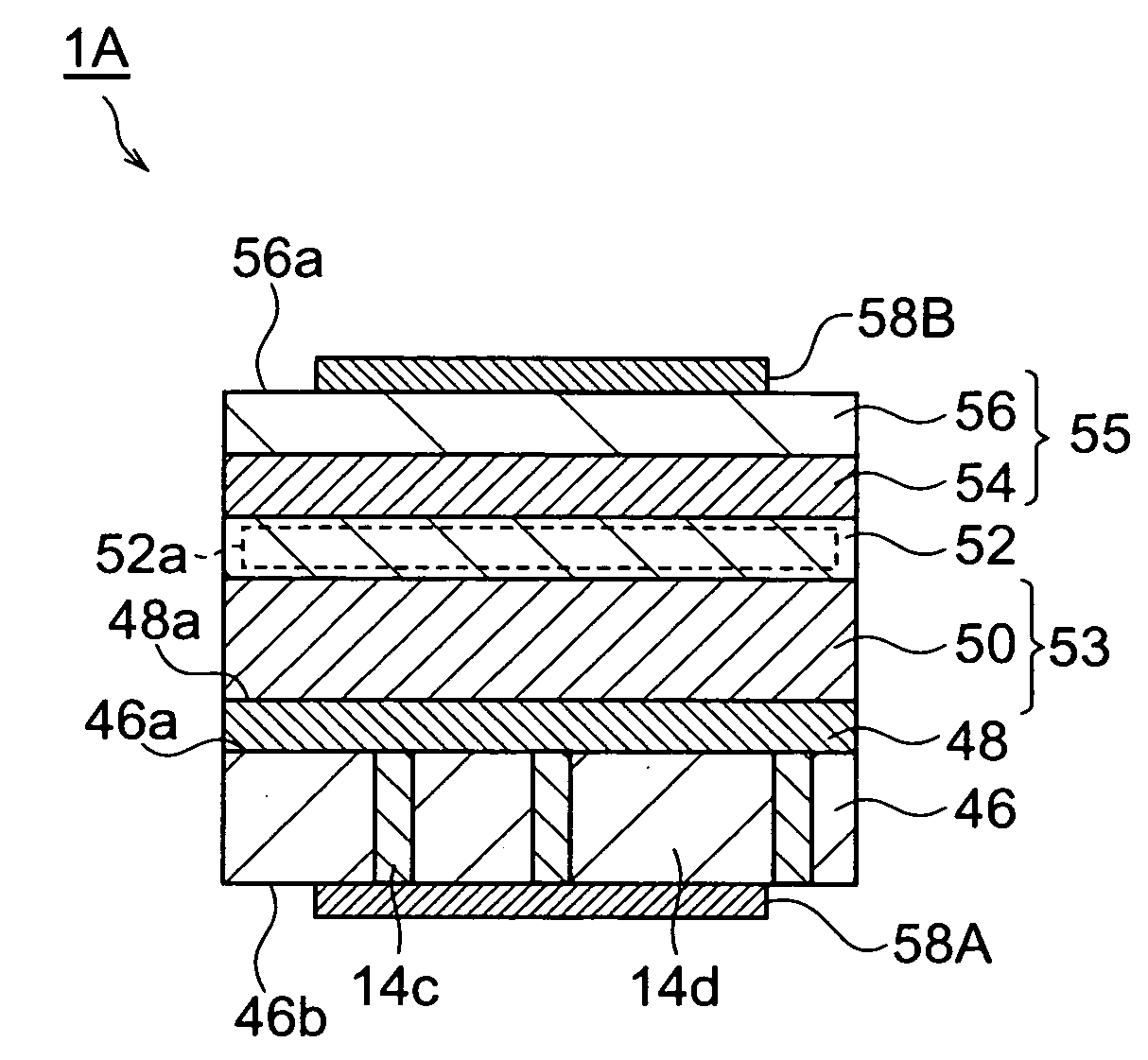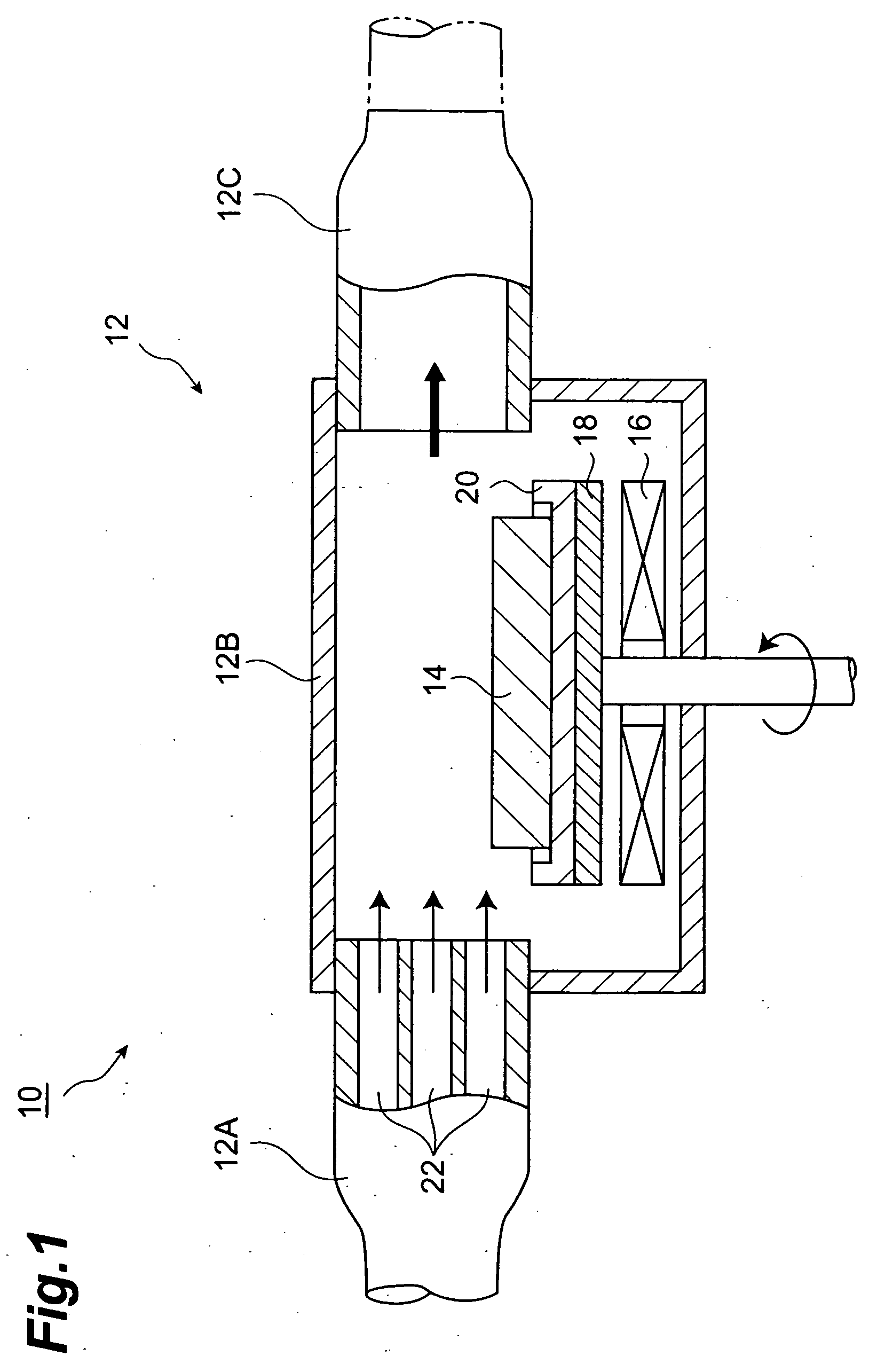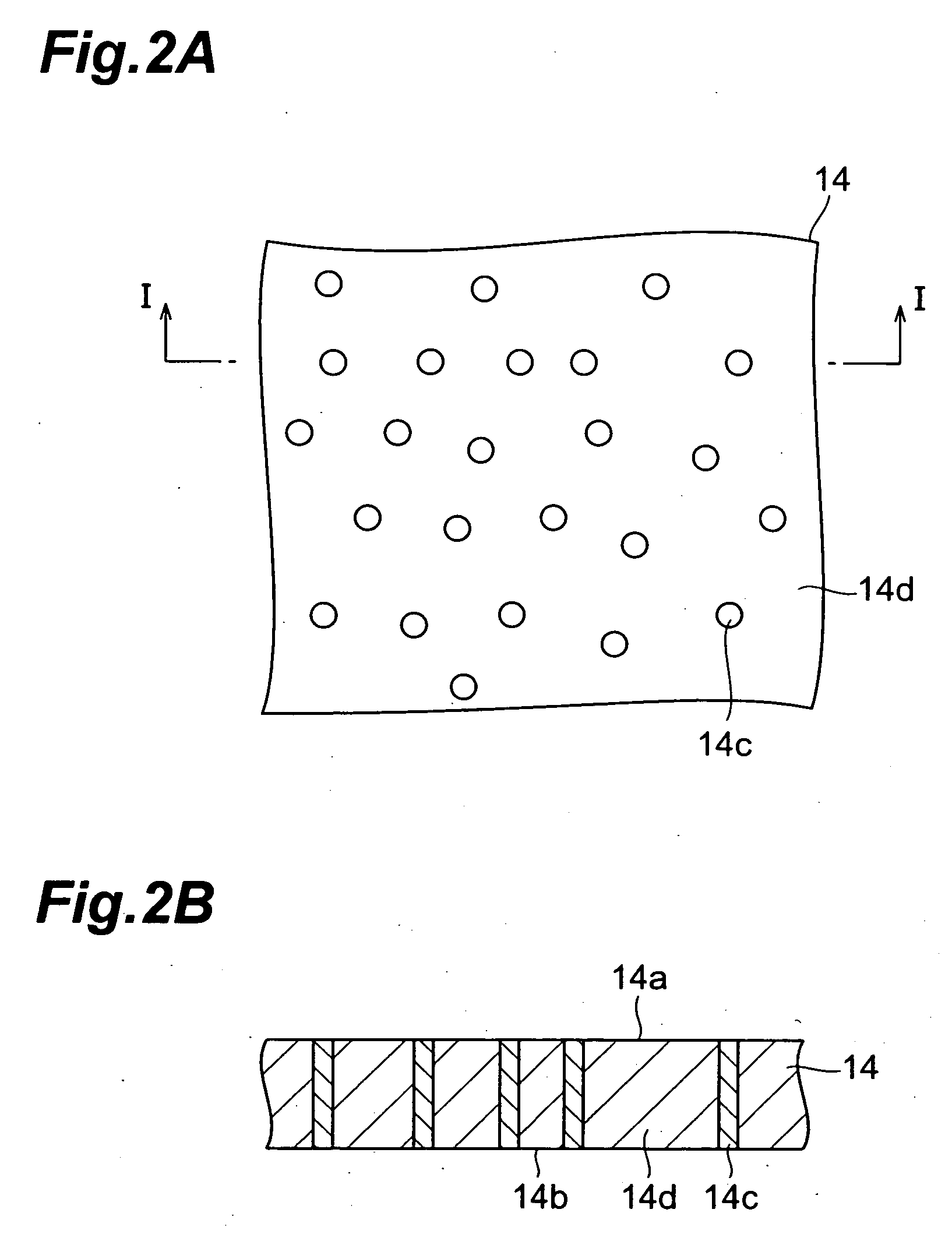GaN substrate and method of fabricating the same, nitride semiconductor device and method of fabricating the same
- Summary
- Abstract
- Description
- Claims
- Application Information
AI Technical Summary
Benefits of technology
Problems solved by technology
Method used
Image
Examples
second example
[0121] A blue light emitting device 1B has been fabricated as a second example. First, the substrate 14 is placed in the tray 20 and the surface 14a thereof is cleaned in the same manner as in the first example. Then, the substrate temperature and the furnace pressure is kept at Celsius 1050 degrees (.degree. C.) and at 101 kilopascals (kPa), respectively, and TMA, TMG, NH.sub.3 and SiH.sub.4 gases are supplied to the flow channel 12 to alternately deposit ten cycles of n-type Al.sub.0.14Ga.sub.0.86N layers in the thickness of 10 nanometers (nm) and n-type GaN layers in the thickness of 10 nanometers (nm), thereby growing an intermediate layer. Thereafter, an n-type buffer layer, a light emitting layer, a p-type cladding layer and a p-type contact layer are grown in the same manner as that in the first example. The surface of the p-type contact layer grown as above is observed with a differential interference microscope and this photograph reveals that the surface of the p-type cont...
experiment example
[0123] Subsequently, an experiment example for verifying the technical effects as shown in the above examples will be presented. A light emitting device without an intermediate layer has been formed as an example.
[0124] First, a GaN single crystal substrate is placed in the tray 20 on the susceptor 18 and the surface thereof is cleaned in the same manner as in the first example. Then, while keeping the substrate temperature at Celsius 1050 degrees (.degree. C.) and the furnace pressure at 101 kilopascals (kPa), TMG, NH.sub.3 and SiH.sub.4 are supplied the flow channel 12 to grow n-type GaN in the thickness of 2 micrometers (.mu.m). Thereafter, a light emitting layer, a p-type cladding layer, and a p-type contact layer are successively grown in the same manner as in the first example.
[0125] FIG. 12 is a view showing the surface of the p-type contact layer in the light emitting device fabricated as the experiment example. This is a photograph taken with a differential interference mic...
second embodiment
[0128] In the second embodiment, the n-type semiconductor region is formed on the intermediate layer and the p-type semiconductor region is formed on the active layer, but it is also possible that the p-type semiconductor region is formed on the intermediate layer and that the n-type semiconductor region is formed on the active layer.
[0129] The second embodiment exemplifies the light emitting devices as nitride semiconductor devices of the present invention, but the present invention is not limited thereto and can also be suitably applied to transistors and others made of GaN based material having the n-type region and p-type region.
PUM
 Login to View More
Login to View More Abstract
Description
Claims
Application Information
 Login to View More
Login to View More - R&D
- Intellectual Property
- Life Sciences
- Materials
- Tech Scout
- Unparalleled Data Quality
- Higher Quality Content
- 60% Fewer Hallucinations
Browse by: Latest US Patents, China's latest patents, Technical Efficacy Thesaurus, Application Domain, Technology Topic, Popular Technical Reports.
© 2025 PatSnap. All rights reserved.Legal|Privacy policy|Modern Slavery Act Transparency Statement|Sitemap|About US| Contact US: help@patsnap.com



